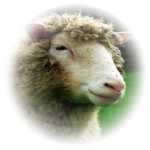| WEB RESOURCES |
DETAILS |
What are clones?
Source: Dolan DNA Learning Center |
Watch an animation on the cloning of Dolly the sheep and Cumulina the mouse.
|
Basic Genetics
Source: Genetic Science Learning Center,
University of Utah |
Are you a little confused by all the talk about DNA and genes? Try this animated tour presenting basic information and explanations of DNA, genes, chromosomes, inheritance and mitosis/meiosis. |
Understanding Genetics - Dominant and Recessive Eye-Color Genes
Source: Stanford @ The Tech |
Do you have your mother's eyes or your father's? An article to help you understand dominant and recessive eye-color genes. |
What are proteins?
Source: Genetic Science Learning Center
|
Proteins are the workhorses of our bodies |
Central Dogma of Biochemistry
Source: John Wiley & Sons Publishers, Inc. |
An animation that explains the process of protein synthesis.
Click on "View Animation" before proceeding to "Next".
How are proteins made?
Source: Science Museum UK
|
Build a DNA Molecule
Source: Genetic Science Learning Center
The University of Utah |
Find out how the letters A, G, C and T form a DNA molecule by building one yourself. |
DNA Workshop Activity
Source: PBS Science Odyssey |
The activity in this section places you within the cell, involving you with the processes of DNA replication and protein synthesis. |
The Cloning Fact Sheet (Graphic)
Source: The National Human Genome Research Institute |
Questions and Answers about Cloning |
Click & Clone
Source: Genetic Science Learning Center,
The University of Utah |
Learn about Somatic Cell Nuclear Transfer by helping to create a genetically identical clone of a brown female mouse. This activity mirrors the steps from the 1998 cloning of mice at the University of Hawaii. |
Is It Cloning or Not?
Source: Genetic Science Learning Center,
The University of Utah |
Test yourself with this interactive quiz to identify 7 scenarios as cloning or not. Explanations are included after the answers. |
Cloning Myths
Source: Genetic Science Learning Center,
The University of Utah |
Instant clones? Carbon Copies? A discussion of the major misconceptions about cloning. |
The Nature of Stem Cells
Source: Genetic Science Learning Center,
The University of Utah
|
An animation on stem cell basics. |
Cloning
Source: John Wiley & Sons Publishers, Inc. |
An animation that explains Recombinant DNA Technology
The main sections will open up sub-sections at the bottom; click on each one of these and "play" the animation before proceeding to "Next". |
 Prior to Dolly, scientists thought if we clone liver cells, we get more liver cells. Liver cells were not going to generate muscle cells. But Dolly's birth showed otherwise ... that adult cells can be returned to their undifferentiated embryonic state and then into a complete new animal!
Prior to Dolly, scientists thought if we clone liver cells, we get more liver cells. Liver cells were not going to generate muscle cells. But Dolly's birth showed otherwise ... that adult cells can be returned to their undifferentiated embryonic state and then into a complete new animal!